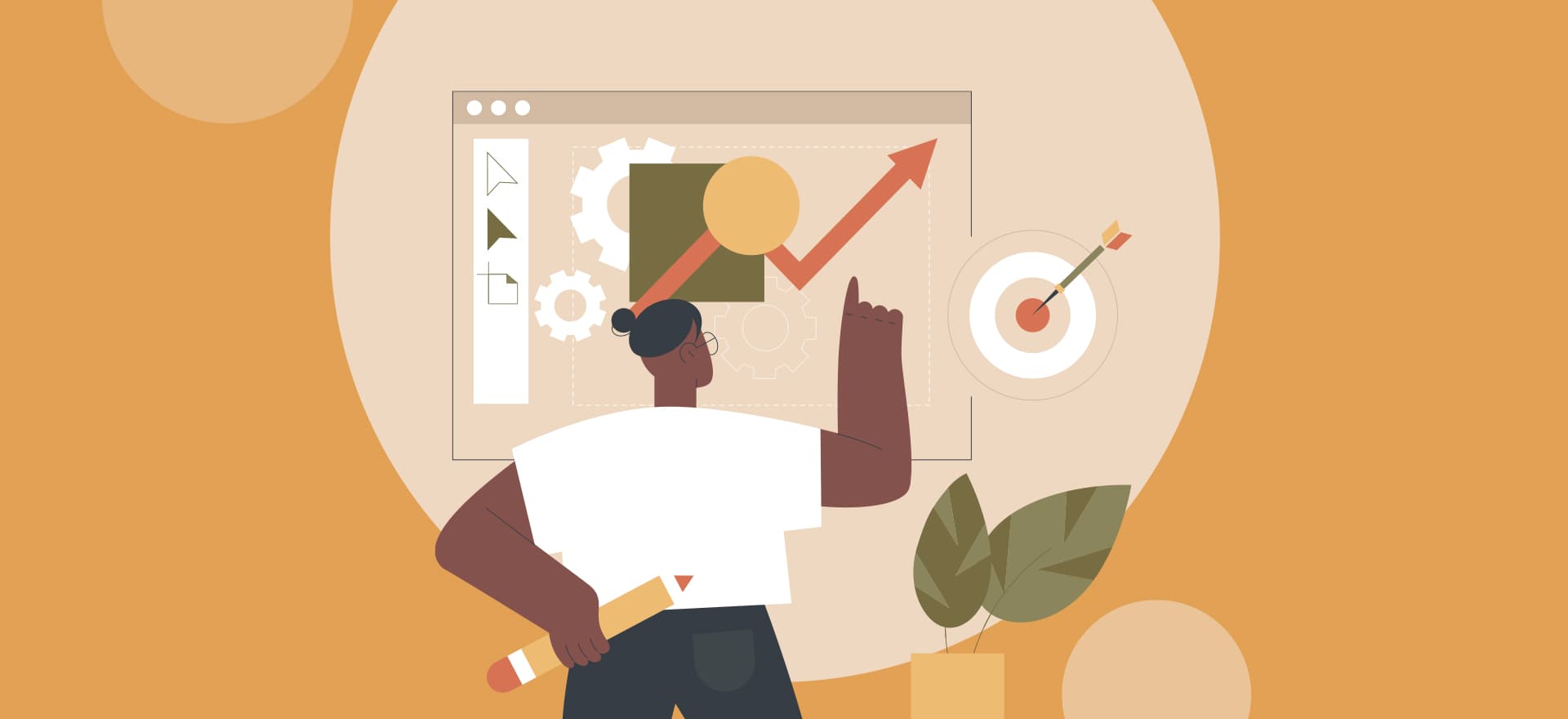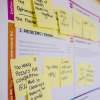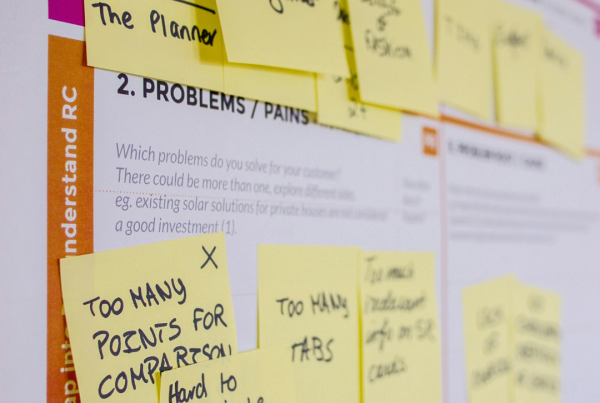As a startup, you may spend a lot of time flying by the seat of your pants. As such, having a design strategy may seem like an unnecessary task or even a hindrance to building products as quickly as possible. However, I’d argue that you’d be doing yourself a disservice by not producing one, as a design strategy shapes your products, branding, and market adoption.
In this article, I will show you the benefits of having a design strategy and how to create one that works for your startup, whether you are just starting out or trying to scale. The important thing to remember is that creating a design strategy is not complicated, it doesn’t take long, and your strategy may change as your startup grows.
Firstly, what is a design strategy?
In simple terms, a design strategy is a blueprint that helps achieve your business’s goals and vision through clever product design. It sits at the intersection of customer needs and business needs. A design strategy shapes your design principles, processes, workflows, priorities, and teams.
Why does your startup need a design strategy?
1. You’ll design things users actually need
As a startup, delivering a market-fit product is essential to your survival. The biggest reason for startup failure is when they build a product nobody needs. A design strategy – a good one – should include steps where you’re validating your idea against actual users. It should be evidence based, and ideally, backed by research.
If your idea sounds good but isn’t tested with your target market, then no number of improvements will fix your product when you’re desperately trying to attract users.
2. You’ll design faster through better focus and alignment
Having a design strategy is like having a base recipe that just works, one that you can alter slightly under certain conditions and constraints. It helps you design faster and deliver to market earlier because everyone is more focused and aligned in making decisions and working together. As a startup, you may find yourself just winging it in design, but a design strategy ensures you’re systematic about it.
3. You’ll be more efficient and work in a more cost-effective way
If you’re just starting out, you’re likely bootstrapping and resource-poor. Maybe you have investors and funders, but you still need to manage the investment wisely. A design strategy helps you be cost-effective by helping you prioritise your design solutions and investing in only crucial areas.
You’ll also be able to streamline your processes and workflows, which helps you be more efficient and productive. This applies whether you are just starting or already in the scaling phase. The bottom line is that a strategy gives order to the madness in a startup.
4. Your designs will be memorable and consistent with your branding
Don’t underestimate the value of great design, and a strategy helps you achieve this. As a startup, you want to stand out from the pack, especially in a market that’s dominated by giant incumbents. One of the ways is to make your customers emotionally connected to you. A great design strategy produces design that’s consistent, representative of your vision and personality, gives you credibility, and makes you memorable.
5. Your startup can scale easier
Lastly, you can scale easier when you need to. Most founders dream of making it big, so having a design strategy early on will help you get your house in order. Whether you are planning to open a new office, grow your design team, outsource your design work extensively, enter a new market, or expand your product line, a design strategy ensures these endeavours are done right, runs smoothly, and are successful.
How to create a design strategy for your startup
1. Know your business
You need to understand your goals, vision, and mission. This shouldn’t be too hard for a startup founder. These are things like why your startup should exist, the problem you are trying to solve, and the big picture you are trying to achieve. Your design strategy must align with your fundamental values and business.
2. Research your target audience, competitors, and industry
The best place to start is to understand your target user, their pain points, their needs, and their behaviours. Run surveys, conduct focus groups, talk to people, or show them your prototype for feedback. Then look at the products that are in the market and your competitors. You will be able to find a few common design themes and identify what is missing in the market.
You can expand your horizons by looking at other industries. Study why some products become the dominant choice and why some fail. You’ll start to see patterns and get a lot of ideas for the design you want for your product. Read product design books and understand the basic principles of UX/UI design.
3. Set your design goals and principles
Once you have done your research, it’s time to determine your design principles, goals, and vision. For example, you want your designs to not only solve a problem for your users but also draw an emotional connection from them. Think about the principle you want to adopt. Design thinking is a popular approach that’s adopted by many big companies, so it is worth having elements of it in your strategy.
You’ll also need to define what success means in more detail. It’s not enough to say that your design should be aesthetically pleasing. You’ll need to measure things such as bounce rate, conversion rate, churn rate, average revenue per user, user satisfaction rate, etc.
Another thing worth thinking about is the effect of design on product development. Consider the implications of your design such as the technology platform and environment you’ll be using, the design’s technical feasibility, integration (if needed), and performance optimisation.
4. Determine your design process, workflow, and teams
Next is setting up your design process, workflows, and teams. As a startup, you’re nimbler and quicker to turn things around. I highly recommend having an iterative design process, where you’re constantly testing things with your users and making incremental improvements.
Launching a minimum viable product first is usually the go-to solution for startups. It is also a cost-effective way when your budget is small because you’re making calculated guesses about your product design.
If your startup is small, you may be doing the design in-house on a small scale or outsourcing the work. It’s up to you; there is no one formula that suits everyone. What’s important is that you need to prioritise your tasks and resources, as startups are generally working under several constraints.
5. Put it in writing
I know that documenting is a pet peeve for some people. Startup founders may feel like they don’t have a lot of time or that writing it down isn’t important enough. But trust me, putting it in writing will help you see things clearly and spot loopholes. You don’t need to write a novel — just enough for other people to understand the gist of it.
6. Be open to new ideas
Lastly, keep an open mind, be flexible, and be ready to adapt to changes. This usually isn’t hard for most startup founders because they’re figuring a lot of things out as they go. However, it’s a good reminder that a strategy shouldn’t be set in stone. Design plans will likely change, estimates may be way off, and you will likely encounter lots of curveballs as you’re building your products. So, be prepared and stay open minded.
Image by vectorjuice on Freepik







